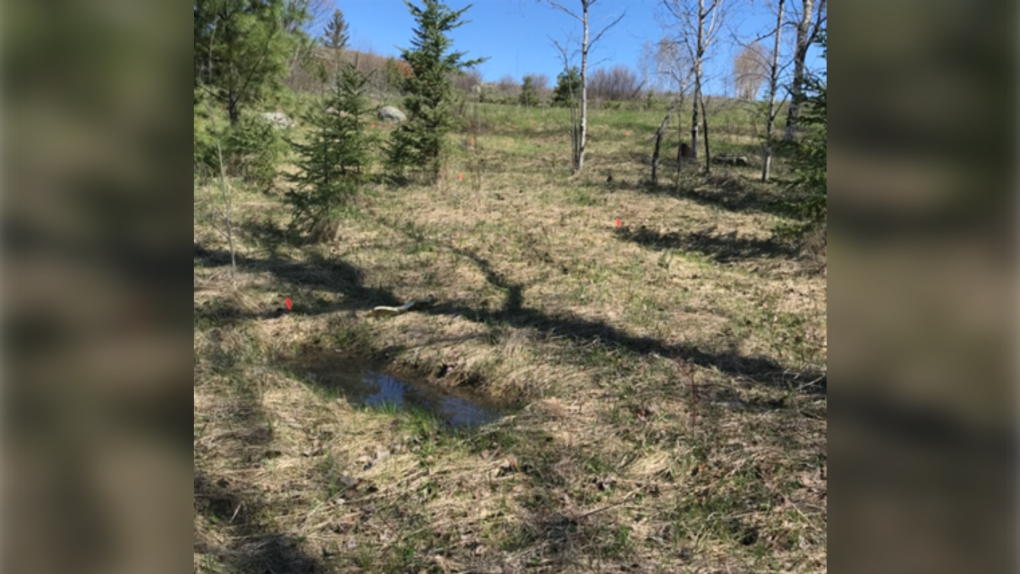'Hurt is still alive:' Northern Ont. community shocked after 'plausible burials' uncovered
The chief of a northern Ontario First Nation that found the province's first "plausible burials" says the community is in shock and its members are working hard to ensure survivors and their loved ones have mental health support.
Wauzhushk Onigum Nation Chief Chris Skead said the uncovering of 171 anomalies and "plausible burials" at the site of former St. Mary's Indian Residential School in Kenora earlier this week is retraumatizing many survivors who attended the Catholic-run institution.
 Wauzhushk Onigum Nation in Kenora, Ont. says it has discovered 171 anomalies at the site of a former residential school. (Submitted photo: Wauzhushk Onigum Nation)
Wauzhushk Onigum Nation in Kenora, Ont. says it has discovered 171 anomalies at the site of a former residential school. (Submitted photo: Wauzhushk Onigum Nation)
The chief said he is seeing difficult emotions from community members and is feeling overwhelmed as his siblings and ancestors attended the institution.
Studies were being conducted by the First Nation's technical, archeological and ground-penetrating-radar team since May that were informed by testimony from survivors.
Most of the findings were unmarked, except for five with grave markers, on the grounds of the former institution that the Truth and Reconciliation Commission has said was attended by more than 6,000 Indigenous children between 1897 and 1972.
The chief said along with mental health support, the Nation's next steps include securing funding from the province to continue forensic identification of the bones that were discovered and establish a way to memorialize the plausible burials.
This report by The Canadian Press was first published Jan. 19, 2023.
If you are a former residential school student in distress, or have been affected by the residential school system and need help, you can contact the 24-hour Indian Residential School Crisis Line: 1-866-925-4419. Additional mental-health support and resources for Indigenous Peoples are available here.
CTVNews.ca Top Stories
Raised in Sask. after his family fled Hungary, this man spent decades spying on communists for the RCMP
As a Communist Party member in Calgary in the early 1940s, Frank Hadesbeck performed clerical work at the party office, printed leaflets and sold books.
Bird flu, measles top 2025 concerns for Canada's chief public health officer
As we enter 2025, Dr. Theresa Tam has her eye on H5N1 bird flu, an emerging virus that had its first human case in Canada this year.
DEVELOPING Body found in wheel well of plane at Maui airport
A person was found dead in the wheel well of a United Airlines flight to Maui on Tuesday.
Police identify victim of Christmas Day homicide in Hintonburg, charge suspect
The Ottawa Police Service says the victim who has been killed on Christmas Day in Hintonburg has been identified.
Christmas shooting at Phoenix airport leaves 3 people wounded
Police are investigating a Christmas shooting at Sky Harbor Airport in Phoenix that left three people injured by gunfire.
Ship remains stalled on St-Lawrence River north of Montreal
A ship that lost power on the St. Lawrence River on Christmas Eve, remains stationary north of Montreal.
Finland stops Russia-linked vessel over damaged undersea power cable in Baltic Sea
Finnish authorities detained a ship linked to neighboring Russia as they investigate whether it damaged a Baltic Sea power cable and several data cables, police said, in the latest incident involving disruption of key infrastructure.
Your kid is spending too much time on their phone. Here's what to do about it
Wondering what your teen is up to when you're not around? They are likely on YouTube, TikTok, Instagram or Snapchat, according to a new report.
Bird flu kills more than half the big cats at a Washington sanctuary
Bird flu has been on the rise in Washington state and one sanctuary was hit hard: 20 big cats – more than half of the facility’s population – died over the course of weeks.
































